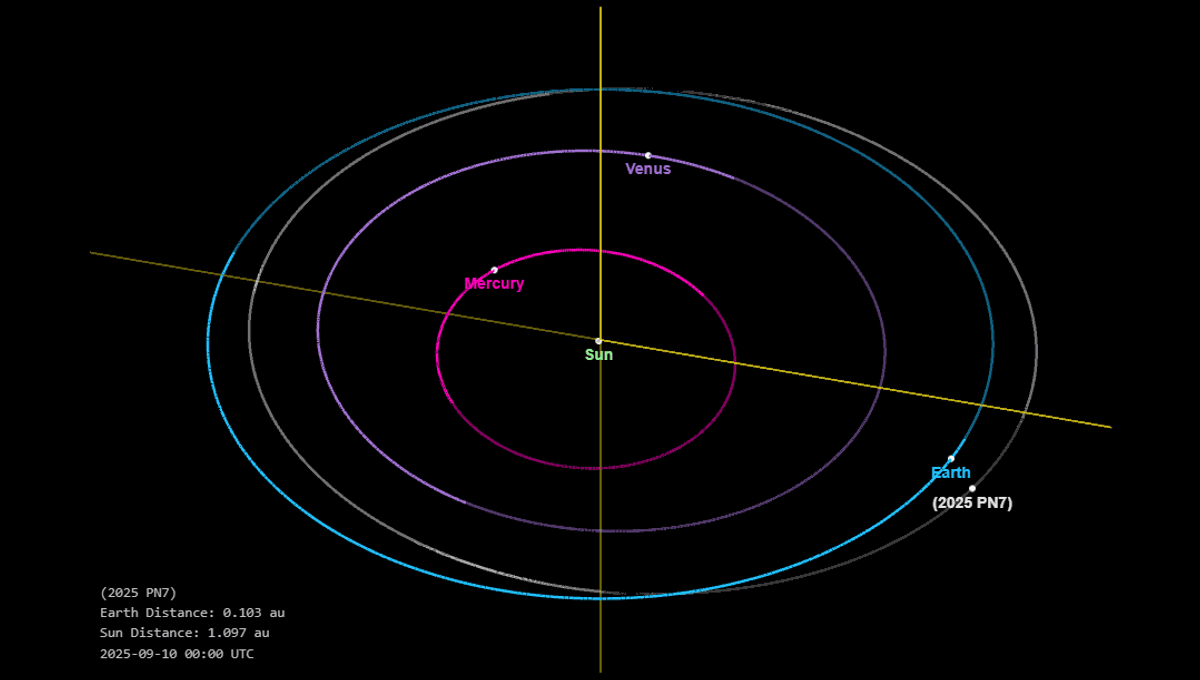
The total number of quasi-satellites of our planet has gone up by one. There are now 8 small asteroids going around the Sun at the same time as our planet, acting almost like moons, hence the term quasi-satellite or quasi-moon. Meet the newest entry, 2025 PN7.
The rest of this article is behind a paywall. Please sign in or subscribe to access the full content.
The object is small. The estimate that can be made based on its absolute magnitude is rough, but place it in the tens of meters, no bigger than that, and likely we are erring on the side of caution. It also doesn’t come closer than several million kilometers to Earth, so even if it has been around for a while, it is not surprising that it was only discovered last month.
What is a quasi-satellite?
From the point of view of the Earth, 2025 PN7 and the other seven quasi-satellites such as 469219 Kamoʻoalewa and the recently named Cardea, go around our planet. If you track them over the course of a year, they just loop around our little world. But they are not gravitationally bound to Earth, like the Moon is or like objects we call mini-moons are.
The region where the gravitational influence of Earth is the dominant force, is called the Hill Sphere. This extends up to 1.5 million kilometers (almost a million miles) away. If a small asteroid passes within it, then it can become captured temporarily and become a mini-moon.
The apparent motion of a quasi-moon around the Earth is a happenstance. It is due to resonance in orbits. As the Earth does one orbit around the sun, so do the quasi-satellites. So they seem to be always around, even though they are not bound.
Not being bound doesn’t mean that they do not feel the tug of Earth’s gravity. These small asteroids are just performing a complex dance around the Sun, under the influence of our planet’s pull. Some quasi-satellites are stable for hundreds of years, such as Cardea, while others are stable for a much shorter period.
How Long Will 2025 PN7 Stick Around?
Preliminary analysis of 2025 PN7 shows that the object was already visible in 2014 in archival data, but it was only with the observations from last month that scientists finally noticed it. Their model suggests that the object has been in this resonant orbit for a few decades and will continue to be in it for several more.
The relative proximity of these objects can allow missions to study them with relative ease. Quasi-satellite 469219 Kamoʻoalewa will be visited by the Chinese mission Tianwen-2, launched this May. It will reach the object next year, and collect a sample likely the year after.
A paper describing the discovery of 2025 PN7 is published in Research Notes Of The American Astronomical Society.
Source Link: Earth Has A New Quasi-Moon – And It Has Probably Been Around For Decades